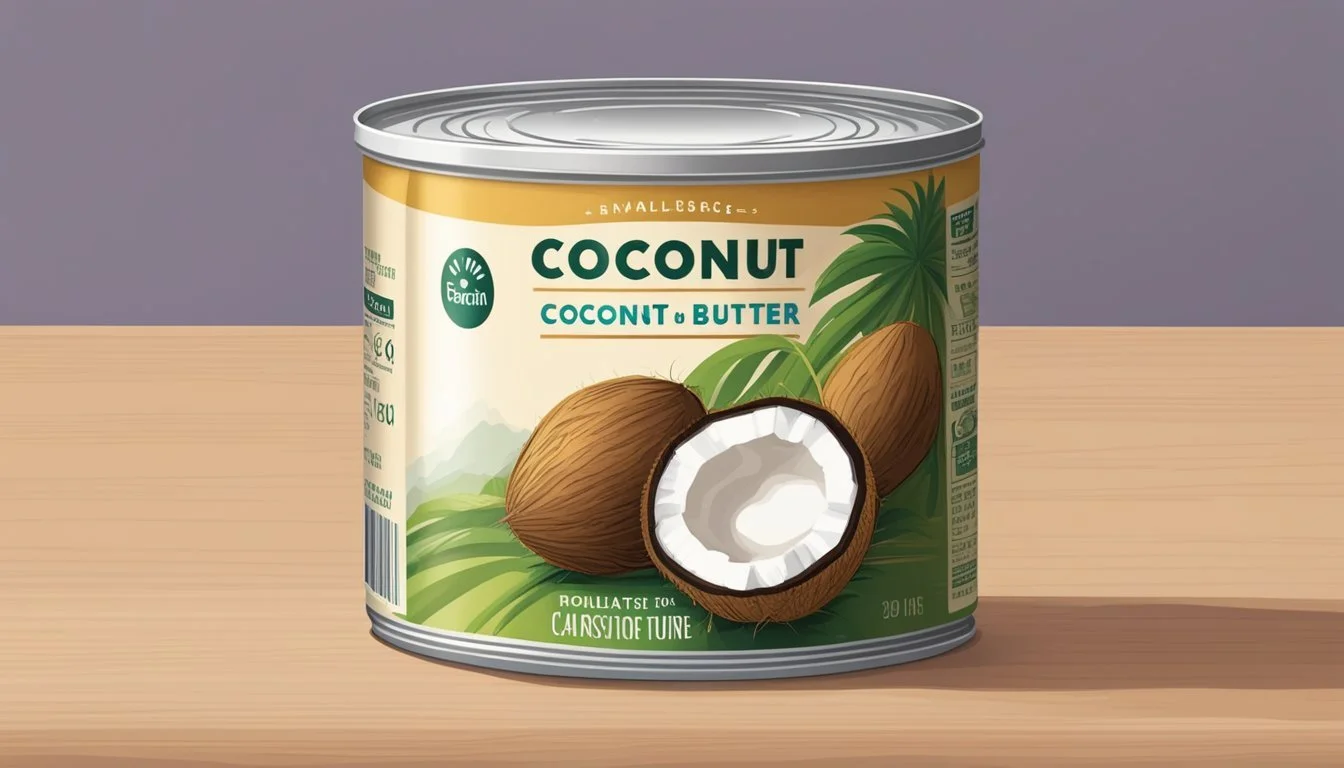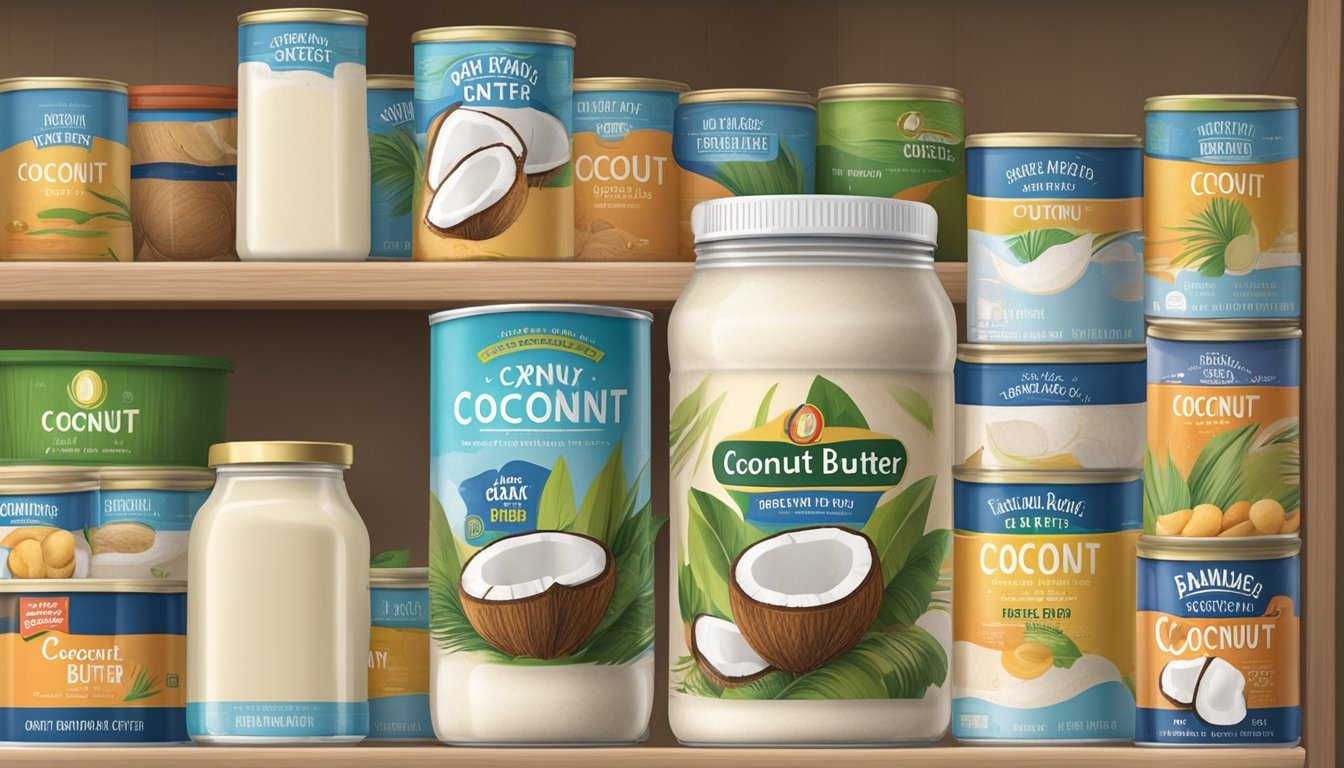How Long Does Canned Coconut Butter Last?
Shelf Life and Storage Tips
Canned coconut butter is a popular ingredient in both culinary and health food communities for its rich texture and versatile usage in recipes. Its extended shelf life compared to other natural butters makes it a staple in many kitchens. Like many canned goods, coconut butter benefits from the canning process which often extends its shelf life beyond that of fresh or homemade counterparts. While the exact duration varies, typically, canned coconut butter lasts for several months to a year past its printed best-before date, provided it's been stored properly.
Storage conditions play a critical role in the longevity of canned coconut butter. It should be kept in a cool, dry place to help preserve its quality. Once opened, maintaining an airtight container and storing it at room temperature can extend its usability. It is essential to look out for any changes in color, smell, or texture as these are indicators that the coconut butter may have spoiled. Consumers can confidently rely on canned coconut butter as a durable food item when incorporating it into their dietary plans.
Understanding Canned Coconut Butter
When considering canned coconut butter, one should focus on its unique composition, nutritional value, and the specifics of its canning process. These factors play a pivotal role in the shelf life and quality of the product.
Composition and Nutrition
Coconut butter is created from the meat of the coconut that is ground into a spreadable paste-like substance. Its composition typically includes a combination of coconut oil and fiber, making it a low-acid food. The nutritional profile of canned coconut butter is relatively high in calories due to its oil content, but it also provides nutrients such as manganese, copper, and iron.
Nutrition Facts (per 2 tablespoons approx.):
Calories: 200
Fat: 18g
Carbohydrates: 7g
Fiber: 5g
Protein: 2g
It is important to note that, unlike high-acid foods such as fruits and most vegetables, the low acidity in coconut butter demands specific canning techniques to maintain quality and nutritional value.
Canning Process for Coconut Butter
The process for canning coconut butter involves sealing the product in an airtight container to prolong shelf life. This method is suitable for preserving low-acid foods, which includes coconut butter. The canning process must ensure that the coconut butter is kept away from contaminants and that the seal is secure to prevent spoilage.
The key to preserving the nutritional value and quality of the coconut butter is to maintain a sterile environment during the canning process and to store the canned product in a cool, dry place away from direct sunlight. The integrity of the canning process, as well as the quality of the coconut butter before it is sealed, directly influences the longevity and safety of the final product.
Proper Storage of Canned Coconut Butter
To extend the shelf life of canned coconut butter, proper storage is crucial. Adherence to optimal storage conditions and understanding the difference between refrigeration and pantry placement can significantly impact the product's quality and longevity.
Optimal Storage Conditions
For canned coconut butter, it is paramount to store it in a cool, dry place, away from direct sunlight and sources of heat. An ideal storage space would be a pantry or a cupboard, where temperatures remain relatively stable. Maintaining the canned goods in an airtight container after opening prevents exposure to moisture and other contaminants that can hasten spoilage.
Temperature: Room temperature, between 50°F (10°C) and 70°F (21°C).
Moisture: Avoid places with high humidity.
Light: Store away from light to preserve the butter's quality.
Refrigeration vs. Pantry
Once opened, the remaining coconut butter should be transferred to an airtight container if not consumed entirely. Whether to store this butter in the refrigerator or pantry depends on the anticipated use rate and personal preference for texture.
Refrigerator: Can extend the freshness of the product. Store it in a tightly sealed container and use within a few days to a week. Keeping it refrigerated can firm up the texture, making it less spreadable.
Conditions Refrigerator Temperature 35°F (2°C) to 45°F (7°C) Shelf Life Use within 4 to 7 days after opening Container Type Tightly sealed, airtight container
Pantry: Suitable for short-term storage, especially if it is used quickly after opening. If the pantry storage method is chosen, ensure that it is kept in an airtight container at room temperature and away from any sources of heat or light.
Conditions Pantry Temperature 50°F (10°C) to 70°F (21°C) Shelf Life Use within several days after opening Container Type Tightly sealed, airtight container
Shelf Life and Expiration
Understanding the shelf life and expiration of canned coconut butter ensures its quality and safety when consumed. Coconut butter's longevity can be influenced by storage conditions and its intrinsic properties as a shelf-stable food.
Deciphering Expiration Dates
Manufacturers provide expiration dates on canned goods as a guideline for optimal quality. While canned food typically remains safe beyond the printed date, shelf life for canned coconut butter can be more variable. It's generally advised that one should consume it before this date for the best taste and texture, although the product may still be safe to eat thereafter if stored properly.
Signs of Spoilage
Canned coconut butter should not be used if:
The can shows signs of damage, such as swelling, rust, or dents.
The contents exhibit signs of spoilage like a rancid smell, discoloration, or the presence of mold.
Upon opening, there's an odd odor or the sound of escaping air, which can indicate bacterial growth and spoilage.
Retailers and safety guidelines suggest erring on the side of caution and disposing of any canned goods that show these signs, to prevent the risk of consuming spoiled food.
Food Safety Concerns
When it comes to canned coconut butter, safety is paramount. If not stored or monitored properly, there are risks of food poisoning due to factors that may compromise the integrity of the product. Consumers should know the signs of potential spoilage and understand how to prevent contamination to ensure the product remains safe for consumption.
Risks of Consuming Expired Coconut Butter
Expired canned coconut butter can pose health risks if consumed. Consumers are advised to check cans for signs of spoilage such as rust, dents, swelling, or bulging. These can be indicators of compromised can integrity and potential food poisoning. Cans that are leaking should also be discarded. An off or unpleasant smell when opening the can is another sign that the coconut butter may not be safe to eat. Importantly, if one is suspicious about the can’s safety, it is critical to avoid tasting the product, as even a small amount of botulism toxin—produced by a spore forming bacteria—can be lethal.
Signs of spoilage:
Rust on the can
Dents that are severe, especially ones on seams
Swelling or bulging of the can
Leaking fluids
Off smell upon opening
Preventing Contamination
Preventing contamination is key for ensuring the safety of canned coconut butter. The USDA guidelines on food storage practices should be followed diligently. This entails storing cans in a cool, dry place and keeping them away from extreme temperature changes. Any canned foods, once opened, should be transferred to a food-safe container if not used immediately and refrigerated. Ensuring hygiene and food safety by washing hands thoroughly before handling the food and using clean utensils is also vital. By following these practices, consumers can reduce the risks associated with potentially unsafe food products.
USDA recommended storage practices:
Store in a cool, dry place.
Avoid extreme temperature changes.
After opening, refrigerate in a separate food-safe container.
Consumers should be attentive and proactive in identifying possible concerns associated with canned coconut butter to ensure it remains a safe and enjoyable food product.
Using Canned Coconut Butter
Canned coconut butter offers a versatile and dairy-free option for various culinary uses, providing a distinct coconut flavor to dishes and baked goods. It serves as an alternative to regular butter for those looking for plant-based substitutes.
Cooking and Baking Applications
Canned coconut butter is particularly useful in cooking and baking due to its high-fat content, which imparts a rich texture and moisture to recipes. It is ideal for creating creamy soups and stews, enhancing the flavors with its subtle coconut essence. In baking, coconut butter contributes to the tender crumb of baked goods like cookies, cakes, and pastries, and can often be replaced in a 1:1 ratio for regular butter.
Alternatives to Regular Butter
For individuals with dietary restrictions or preferences, canned coconut butter is a suitable alternative to regular butter. When used as a spread on bread, it melts slightly and provides a silky texture with a tropical twist. Coconut butter's unique taste is a consideration when substituting, as it will add a coconut flavor to the final product that might not be desired in every recipe.
Extending Shelf Life
To maintain the quality and extend the usability of canned coconut butter past its typical shelf life, one may employ methods such as freezing and vacuum sealing. These techniques can help to preserve the butter's texture and flavor for extended periods.
Freezing Canned Coconut Butter
Freezing coconut butter requires careful preparation to prevent freezer burn and maintain the product’s quality. One should transfer the coconut butter into a freezer-safe container to shield it from the cold air that can dry out the fats and cause off flavors. It’s important to leave some headspace in the container as the butter may expand slightly when frozen. Coconut butter can be stored in the freezer for several months, yet the user should thaw it properly in the refrigerator before use to ensure the best quality.
Instructions for Freezing:
Transfer to a freezer-safe container.
Leave headspace for expansion.
Thaw in the refrigerator before using.
Vacuum Sealing Techniques
Vacuum sealing coconut butter can significantly extend its shelf life by removing air from the packaging, thus reducing oxidative rancidity. The vacuum seal can maintain the butter’s freshness by preventing the intrusion of moisture and other contaminants. This technique is beneficial for pantry storage but is particularly effective when combined with refrigeration, which further slows down the decomposition process. One should note that vacuum sealing does not prevent spoilage indefinitely; it is a method to slow down the deterioration of quality and extend freshness.
Steps for Vacuum Sealing:
Ensure the coconut butter is at room temperature.
Use a vacuum seal bag or container.
Store in a cool, dark place or refrigerate for optimal preservation.
Emergency and Long-Term Preparedness
When considering emergency food supplies, convenience and shelf-life are paramount. Canned coconut butter is a resilient choice for individuals keen on boosting their emergency preparedness.
Canned coconut butter, due to its high saturated fat content, has an impressive shelf life, which labels it as an ideal candidate for long-term food storage. One can stock up on canned butter, ensuring a supply of fat and calories that could be vital in emergency situations.
Shelf Life of Canned Coconut Butter:
Unopened: Up to 2 Years
Opened: Refrigerate and use within 1-2 Months
Storage Tips:
Keep in a cool, dark place
Avoid exposure to heat sources
Ensure cans are sealed properly
Advantages:
Non-Perishable: Great for unpredictable scenarios
Convenient: Ready-to-use without preparation
Nutritious: Offers essential fats and calories
To maintain emergency preparedness, regularly check your supply and rotate stock to ensure quality. Canned foods can suffer from quality degradation over time, so being mindful of expiration dates and storage conditions will help protect your investment in long-term food security.








